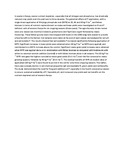Residual effectiveness of Minjingu phosphate rock and fallow biomass on crop yields and financial returns in western Kenya

View/
Date
2006-07Author
Ndung'u, KW
Okalebo, JR
Othieno, CO
Kifuko, MN
Kipkoech, AK
Kimenye, LN
Language
enMetadata
Show full item recordAbstract
In western Kenya, severe nutrient depletion, especially that of nitrogen and phosphorus, has drastically reduced crop yields over the past two to three decades. The potential effects of P application, with a single direct application of Minjingu phosphate rock (MPR) at 20, 40 and 60 kg P ha−1, and fallow biomass in terms of nutrient replenishment on maize and bean yields were investigated on N and P deficient soils of western Kenya for six cropping seasons (three years). The agro-forestry shrubs tested were one season (six months) Crotalaria grahamiana and Tephrosia vogelii followed by maize monocrop. These fallow species were intercropped with beans in the 2000 long rains season to provide a food benefit to the farmer. Soil samples were taken at the end of each season and analyzed for soil pH and extractable P. The results showed that soil available P increased significantly following application of MPR. Significant increases in bean yields were obtained when 60 kg P ha−1 as MPR were applied, and contributed to a 260 % increase above the control. Significant maize grain yield increases were obtained when MPR was applied alone or in combination with fallow biomass as compared with treatments with either no external nutrient addition (control) or with fallow biomass alone in all seasons. The 60 kg P ha −1 MPR rate gave the highest cumulative maize grain yields (9.6 t ha−1) over the five consecutive maize growing seasons, followed by 40 kg P ha−1 (8.8 t ha−1). The residual benefits of MPR at modest rates of application (60 kg P ha−1) were found to persist in the soil for only three cropping seasons. Thereafter, there was a steady decline in soil chemical properties (pH and available P), grain yields and net benefits. The study demonstrated the need for frequent additions of P especially in the fourth consecutive season to ensure sustained availability of P, favorable pH, and increased crop yields and net benefits on the nutrient-depleted soils of western Kenya.
URI
http://journals.cambridge.org/action/displayAbstract?fromPage=online&aid=465519&fileId=S0014479706003565http://hdl.handle.net/11295/84472
Citation
Experimental Agriculture / Volume 42 / Issue 03 / July 2006, pp 323-336Publisher
University of Nairobi
